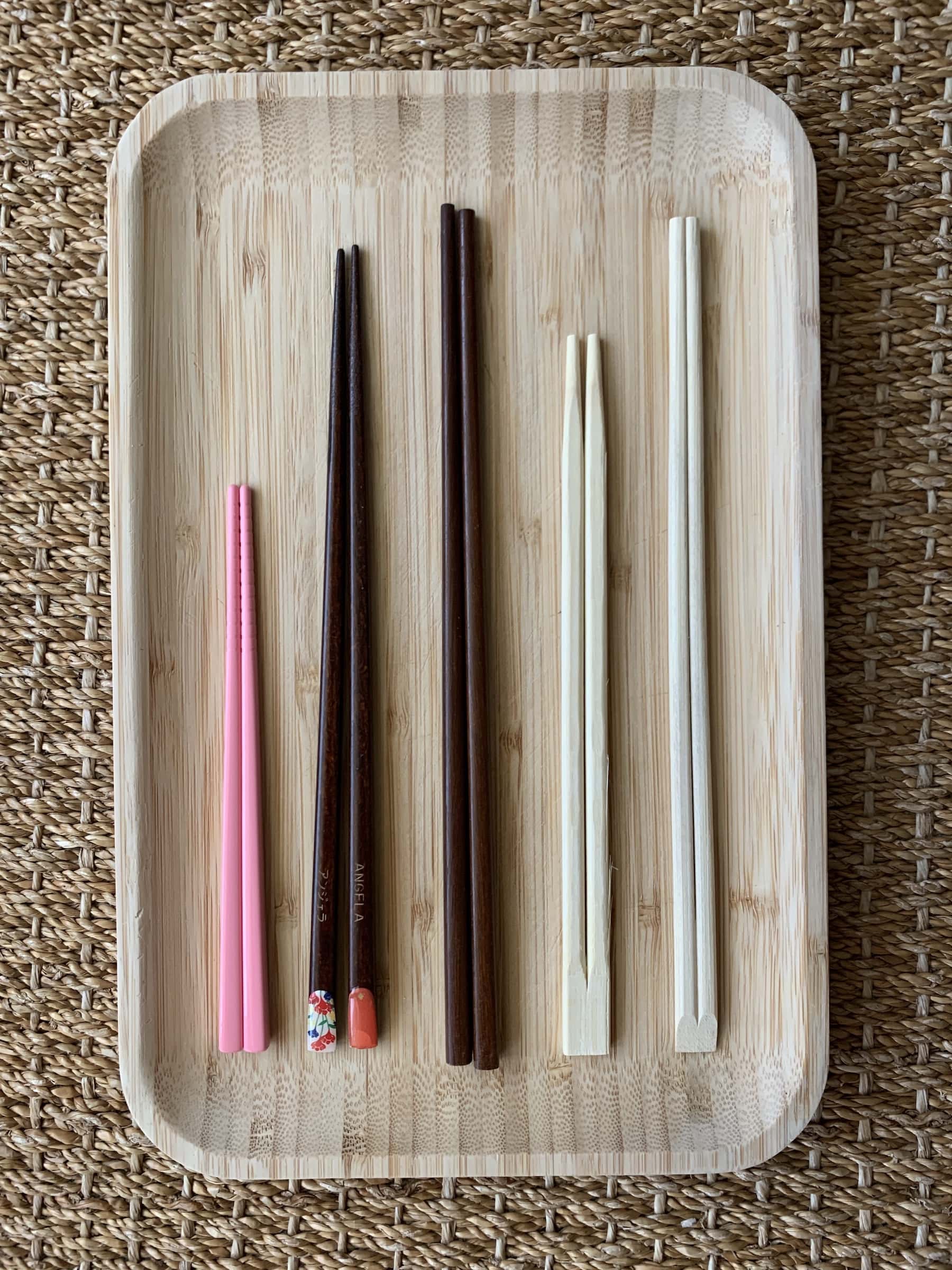
Detailing the Differences Between Chopsticks in Asia.
Chopsticks are often generalized with Asian cuisine, and there is a misconception that all are the same. Not at all. There are actually different chopsticks from each country and culture.
The Origins in Asia
Chopsticks were first used in Ancient China, as far back as 5,000 years ago. It was in the most primitive form – as the sticks and branches broken from nearby trees. Rather than for eating, they were first used as a tool to retrieve food from the fire or in hot cooking pots.
As populations grew and resources were more scarce, food was cut into smaller pieces in order for the food to cook faster and for less fuel to be used. Plus, there was no need for knives to cut the food to eat. This is when chopsticks were used to eating aside from cooking.
It has been said that it was Confucius in the 500s B.C. that further popularized chopsticks. He was a vegetarian who believed that knives and utensils evoked violence, warfare, and reminders of the slaughterhouse. Therefore, chopsticks were more peaceful at the table and the blunt ends were more suited than sharp-pointed ones.
By 500 A.D., Chinese traders introduced chopsticks to Korea, Japan, and Vietnam. These cultures redeveloped them according to their own cuisines.
Fun fact: The Japanese made the first disposable set created from bamboo in 1878.
Detailing the Differences in China, Japan, Korea, and Vietnam
China
Chopsticks from China are typically made from bamboo, wood, or plastic, and sometimes even bone, metal, jade, ivory, or silver. They have a rectangular shape with blunt ends and longer in length, about 25cm/10 inches. Because of the culture’s family-style eating, the length serves the purpose of being able to reach into the plates on the lazy susan or hot pot.
Etiquette tips:
- Don’t spear food.
- Don’t dig around for food. Get the piece that you touch.
- Don’t tap them on the bowls or plates.
- Don’t use them to point toward others.
- Never stick them vertically into a bowl of rice. That means death.
Japan
Chopsticks in Japan were first only used in certain religious ceremonies before gaining popularity as an eating utensil.
Japanese chopsticks are typically made of wood and shorter in length. The tips are rounded and taper to the point. This is attributed to the fact that the Japanese diet consists of consuming whole bony fish. The pointed ends make it easier to remove small bones from the fish.
As for its shorter length, men typically used chopsticks that are about 8 inches long, while women use ones that are about 7 inches long. It is presumed that the shorter length is a result of individual meal sets, rather than family-style plates in the middle of the table.
Etiquette tips:
- Don’t cross them on the plate with you are done eating.
- Don’t stick them vertically into rice – this also means death in Japanese culture.
- Don’t transfer food from your chopsticks to another person. Use the back of your chopsticks or share the plate.
- Place chopsticks on the rest while not being used.
For more about Japanese etiquette, read Facts About Japanese Chopsticks & Chopsticks Etiquette
Korea
Chopsticks from Korea were originally made out of silver as the king and royal family wanted to ensure that their food did not have any poison (as silver turns when poison is present). Because of the royal family, chopsticks were a status symbol and the common people used metal to try to emulate the upper class.
Today, Korean chopsticks are medium in length, flat, and made of metal. The flat design prevents the chopsticks from rolling off the table. The metal is thought to be more hygienic than wood. Also, they are always served in tandem with a long metal spoon.
Korean, heavier; thought to be more hygienic
Etiquette tips:
- Don’t pick up your utensils before the elder people at the table.
- Don’t bring the bowl or plate close up to your mouth.
- Set them to the right of the spoon. It is served to the left only for memorial services.
- Use the spoon to eat rice.
Vietnam
Chopsticks from Vietnam are quite similar to Chinese ones. They are made of wood or bamboo with a long length and blunt point.
Etiquette tips:
- Don’t pick up food directly from table.
- Don’t shape them into a V.
- Chopsticks are to bring food to your mouth. Don’t place them into your mouth if they are without food, e.g. as a mindless habit when thinking.
Highly Recommended Chopsticks to Buy Online
But first, check out these Chopsticks Rests & Holders that best suit your dining table style.
Fiberglass Chopsticks
This fiberglass design is 9.5 inches long and dishwasher safe. Plus, they boast top ratings on Amazon.
Bamboo Chopsticks
This bamboo design has a classic Japanese look, 8.8 inches long, and dishwasher safer.
Chinese-style Chopsticks
Ths wood design has the classic Chinese style and 12 inches long – plus, they are reusable.
Stainless Steel Chopsticks
This stainless design is dishwasher safe with fun color options.
Chopsticks Gift Set
This gift set is made out of premium Japanese wood and makes for a thoughtful gift.
Buy your Official JR Pass and Regional Pass!
Stay connected in Japan with Pocket Wifi!
Arrive in style and convenience with Meet & Greet service!

Disclaimer: This article contains affiliate links. As an Amazon Associate, I earn from qualifying purchases. With no additional cost to you, your purchases earn me a commission if you click on the links via my website – Thank you!
Sign up for my newsletter on the sidebar for blog updates and my travel insider tips! And, check out my vlogs on YouTube!







